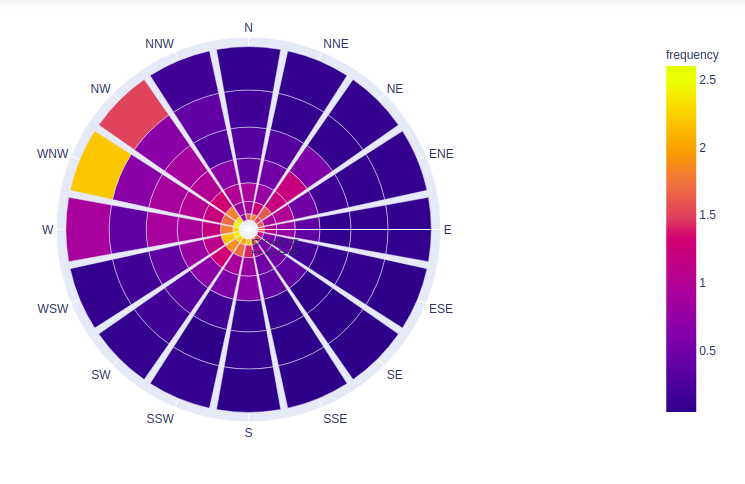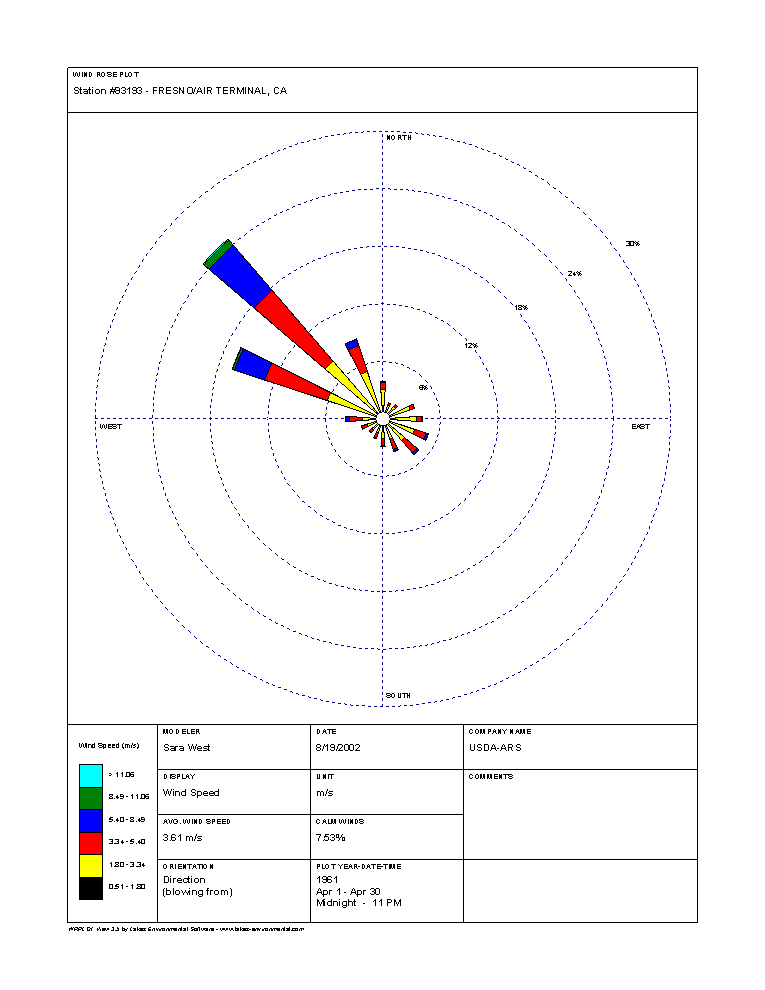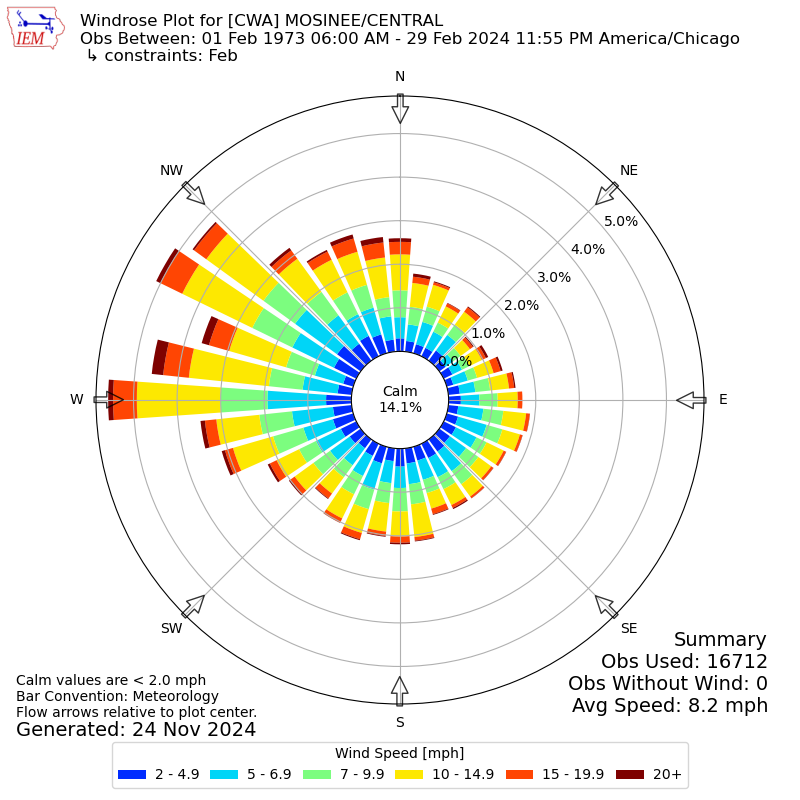

With 'hour sum' the total amount of hours for each speed class and direction is shown. The wind rose shows the distribution of wind in percent, hour sum and air mass. A wind rose is a graphical tool used to show wind speed and wind direction for a particular location over a specified period of time.

You choose between different standards to create a wind rose. If you are familiar with python, it might work well for you. The wind rose is available for 10m and 80m above ground and for gust wind at 10m above ground. In python, polar and rose plots can also be created different ways, one is Plotly.

There are newsgroups and user forums for help as well. It can create just about any type of polar plot you want. If you want to play around with creating polar plots, I recommend the free software GMT, generic mapping tools to get started. These plots are critical because sampling the point from different directions gives us new information, and these plots let us see what information we may be lacking in order to design new surveys to add more information. In plot C, we see the results of stacking the two surveys. Wind roses are graphical charts that characterize the speed and direction of winds measured at weather stations. For observing stations where wind speeds are measured, mostly at airports, users can access tabular data and / or generate wind rose plots. In plot B, the survey was shot to sample the points along a NE/SW direction. The Iowa Environmental Mesonet (IEM) lets you examine long-term records of wind speed and direction for many locations around the world. In other words, the point was sampled primarily along a NW/SE direction. So in plot A, very near the point there is not much trace density, but further away at azimuths trending to the upper left/lower right there is more density. What you are seeing in plots A,B, and C is the the azimuthal coverage of subsurface seismic ray paths for an "average" point in the survey. Another way to think of these plots is "angular histograms." This article article shows rose plots for a subsurface point using this picture. In seismic acquisition and processing rose plots are essential.


 0 kommentar(er)
0 kommentar(er)
